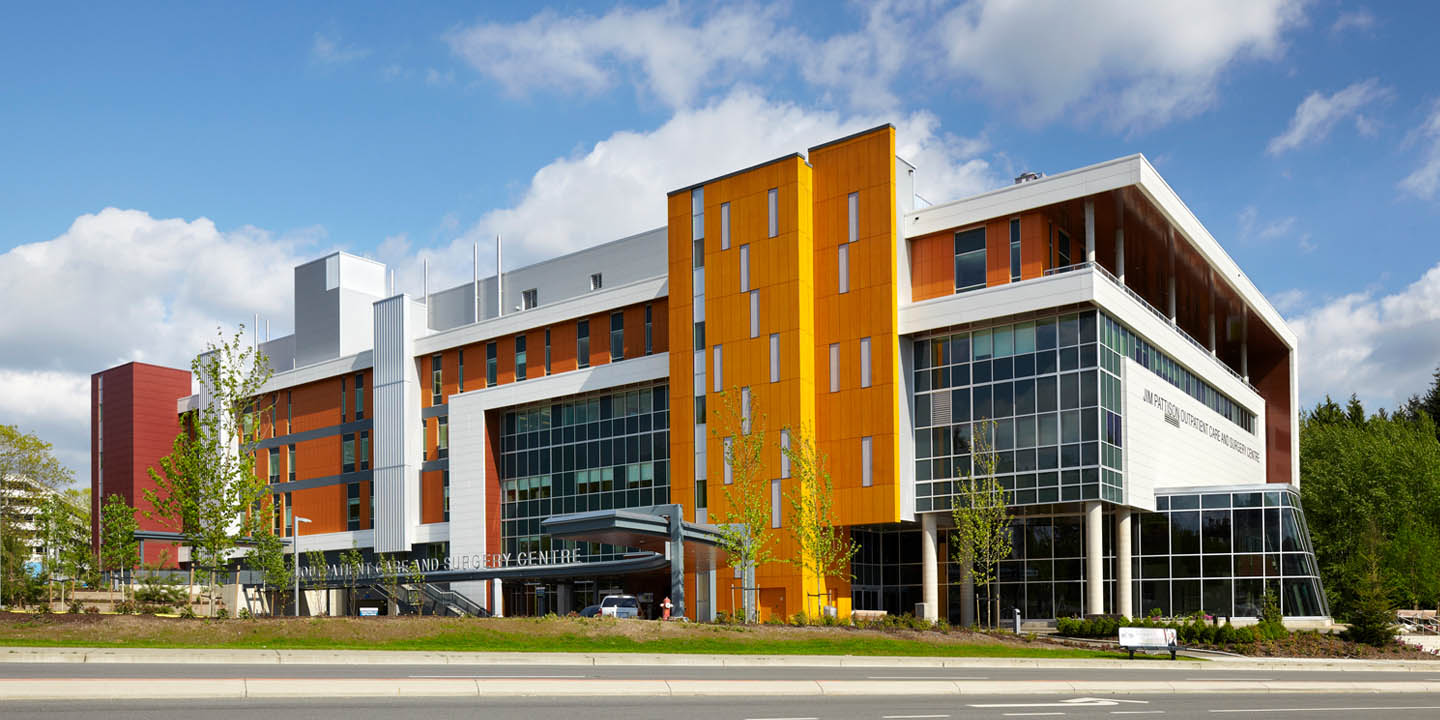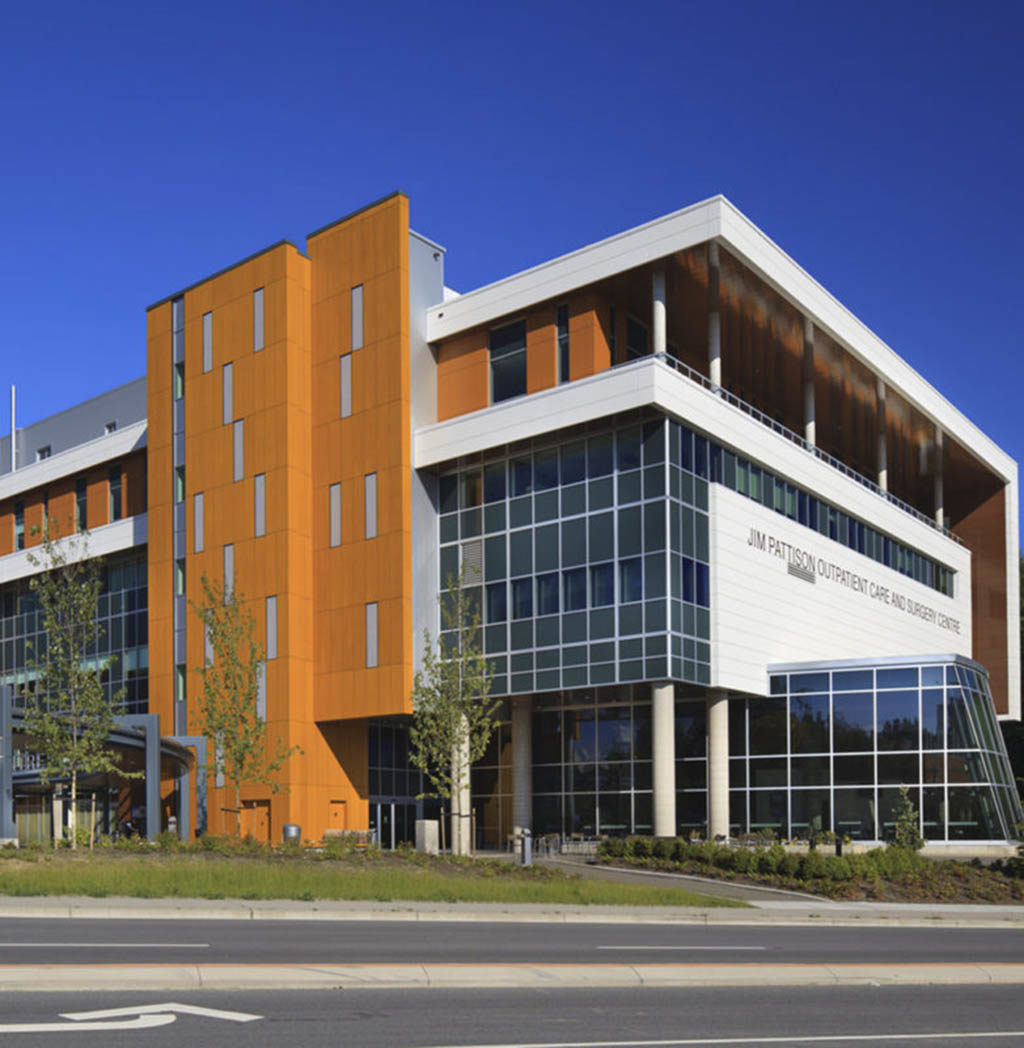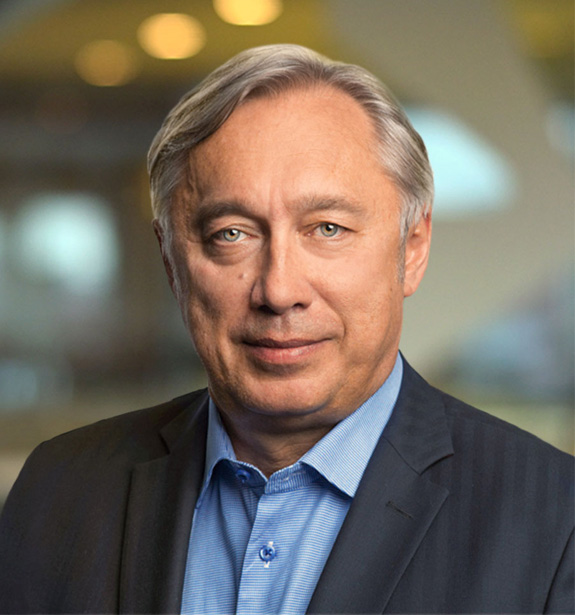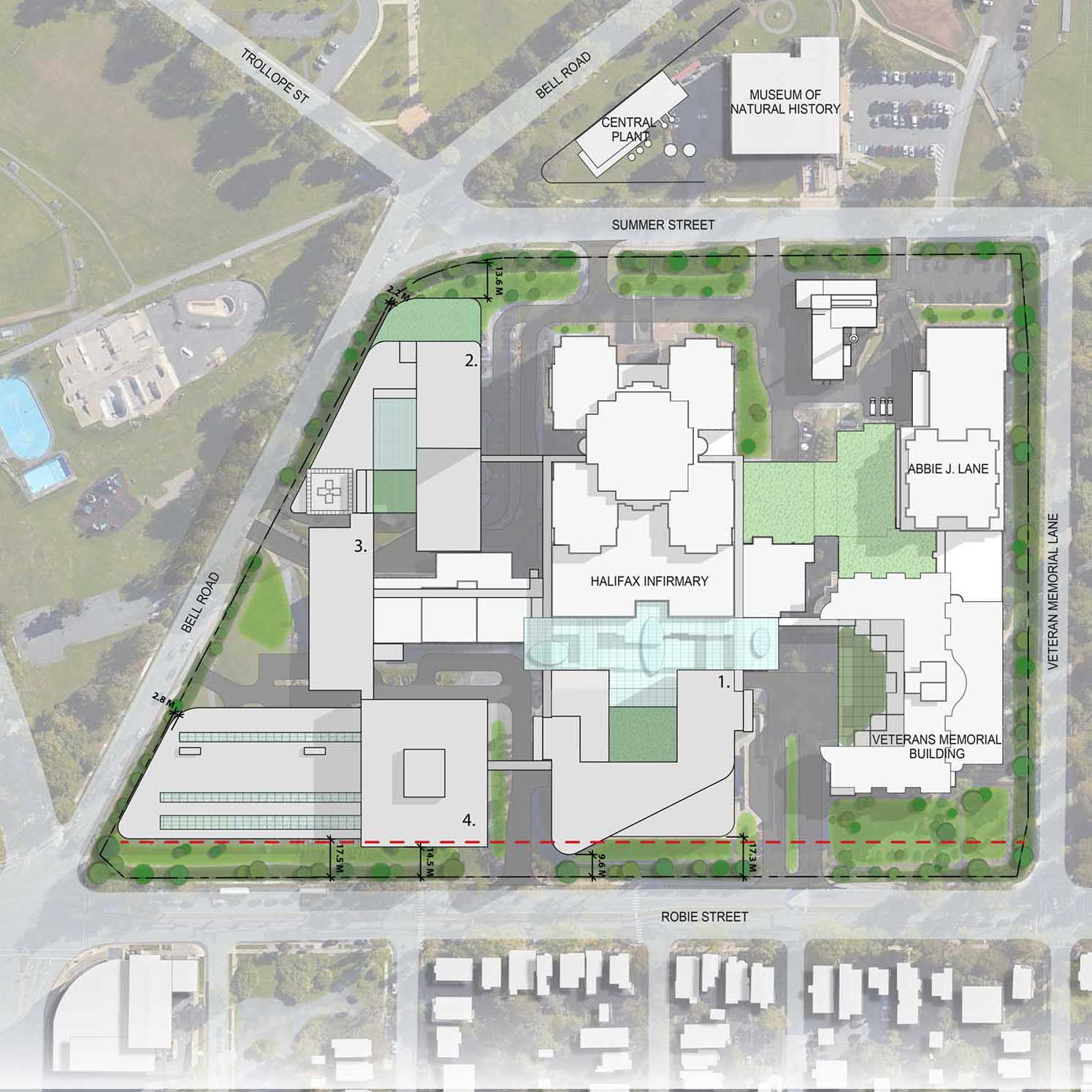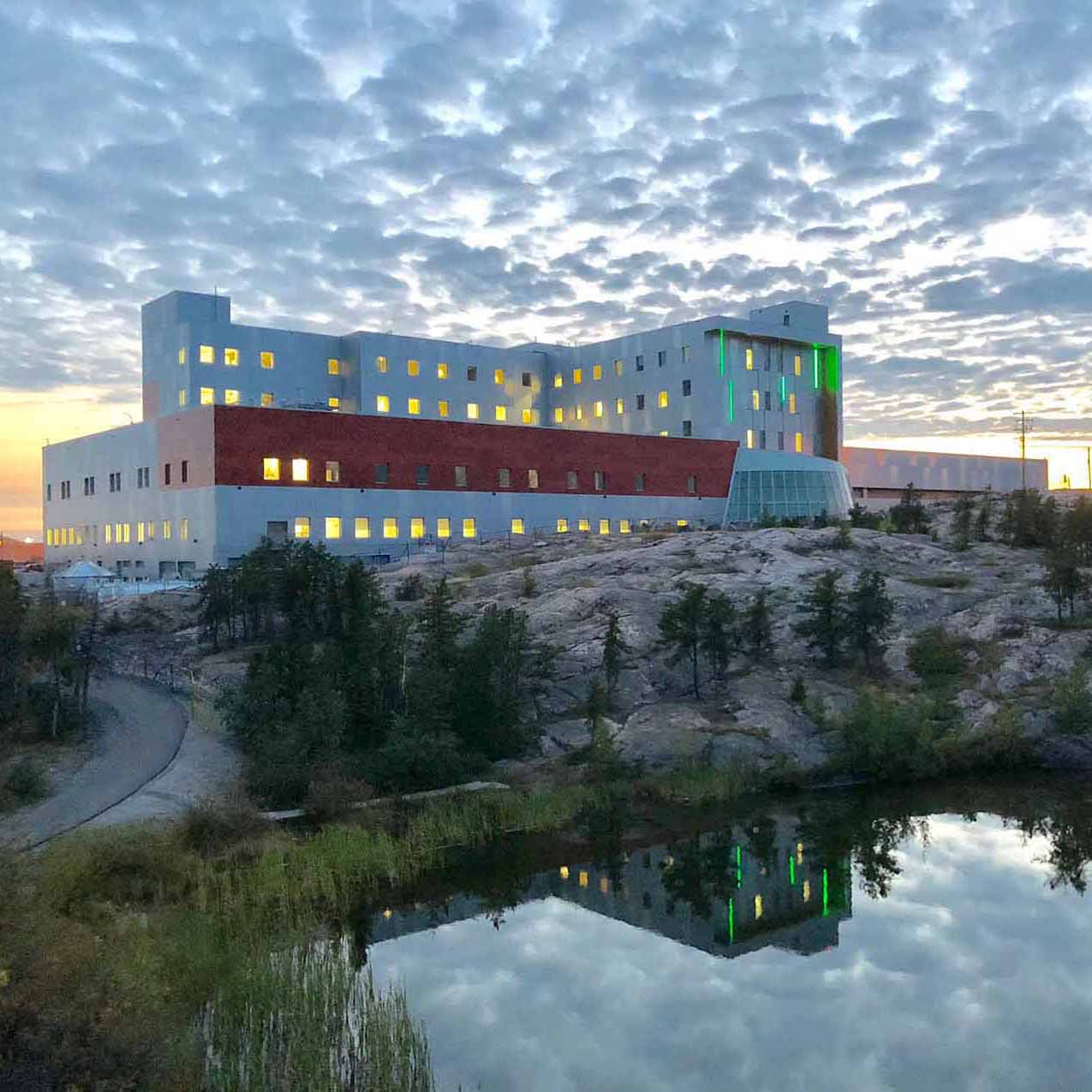Year Completed
2011
Client
Fraser Health Authority
Location
Surrey, BC
Construction value
$239 M
Size
180,000 SF

Evidence-based design research confirms that for medical facilities, connection to nature, abundant natural light, simplified wayfinding, and increased patient control can have a positive impact on patients. These enhancements can reduce patient stress and anxiety, shorten lengths of stay, and improve patient outcomes ― all of which were goals that Fraser Health and BC Healthcare Solutions wanted to achieve with the Jim Pattison Outpatient Care and Surgery Centre in Surrey, B.C. The complex public-private partnership (P3) completed with Bouygues and Bird needed to push the boundaries of patient-centered care and efficiency. For inspiration, we looked to the forest and, perhaps surprisingly, to the airport.

Client Testimonial
The new facility is just amazing. The lab team was one of the first ones in there, even before it officially opened. I can’t tell you what a joy it is to work here. The people at Kasian got it right and I really enjoyed the team.”



Barry Pearce
Project Manager at Fraser Health


Efficiency, ease of use, and provincial LEED Gold sustainability standards all had to be delivered on a short timeline. Designing an outpatient facility comes with its own set of challenges, as well — it is where life-changing moments take place. As a result, we wanted to make the experience of moving through the building as stress-free as possible for patients and their families, and without a ‘clinical’ feeling.
Visiting clinicians, who may or may not be familiar with the building’s layout, needed to be able to experience a clear, intuitive way of working in the 188,000 square-foot facility. Additionally, each floor had to be reconfigurable while still allowing for uninterrupted airflow, climate control, and the movement of people and equipment.
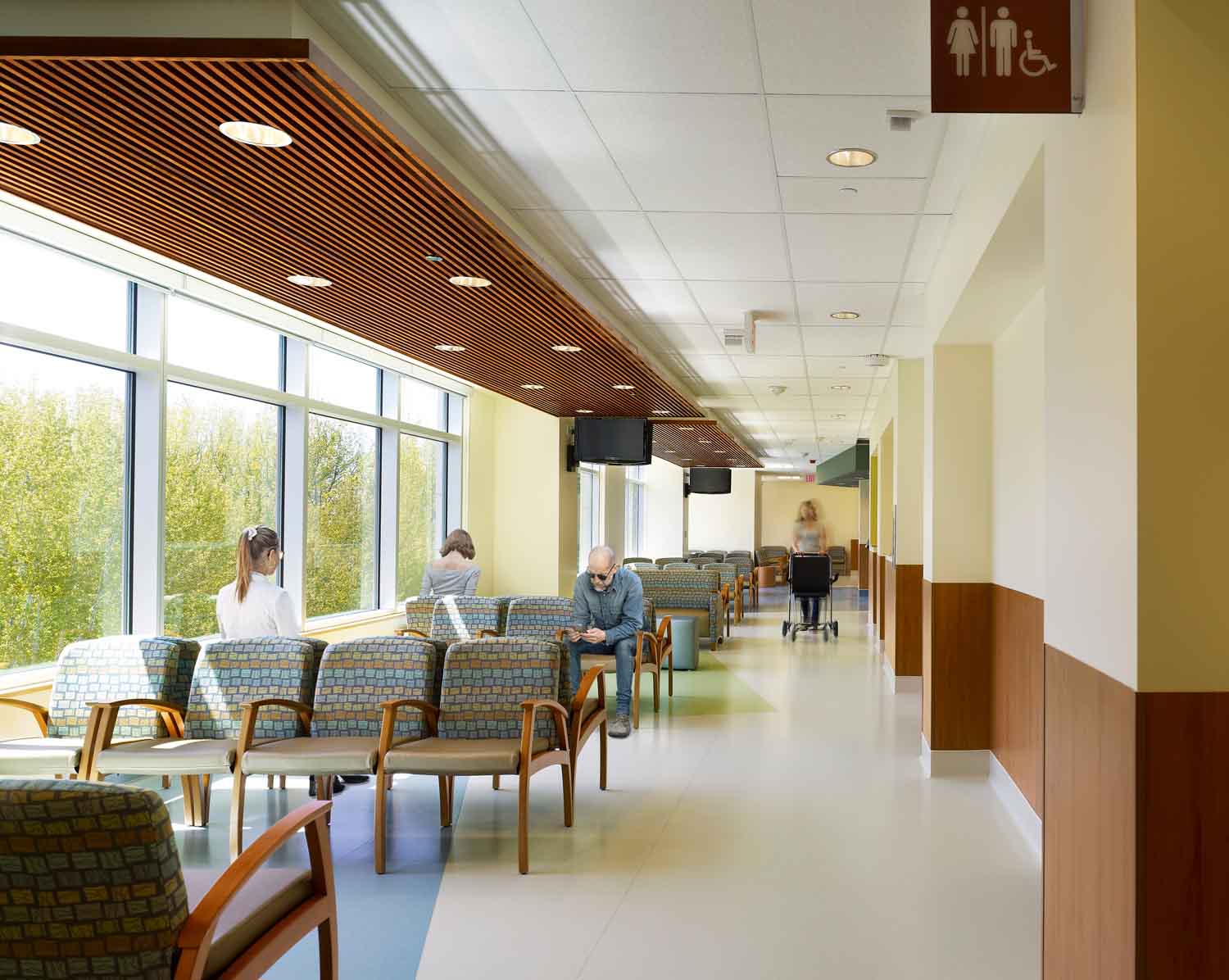

Despite the rigid nature of the P3 process, our team focused on collaborative engagement in our design approach. Working closely with the builders, health authority, engineers, medical staff, support services, and patients, we uncovered creative ideas that surpass conventional healthcare design. We used participatory exercises and a shared visual design vocabulary to empower each stakeholder to express their needs. This ‘in-between thinking’ unlocked new ways of organizing the flow of life in the building.
We looked at our own award-winning airport designs, which minimize decision-making points and external stressors for the visitor. Our goal was to reduce patient anxiety when they entered the building, while also increasing their independence and confidence: as soon as the patient enters, the building itself begins the healing process.
Using cardboard analogues, we created a full-scale mockup of the space that included optimal equipment placement. This allowed stakeholders to ‘rehearse’ their day in the new building and suggest refinements to make it more human-friendly.
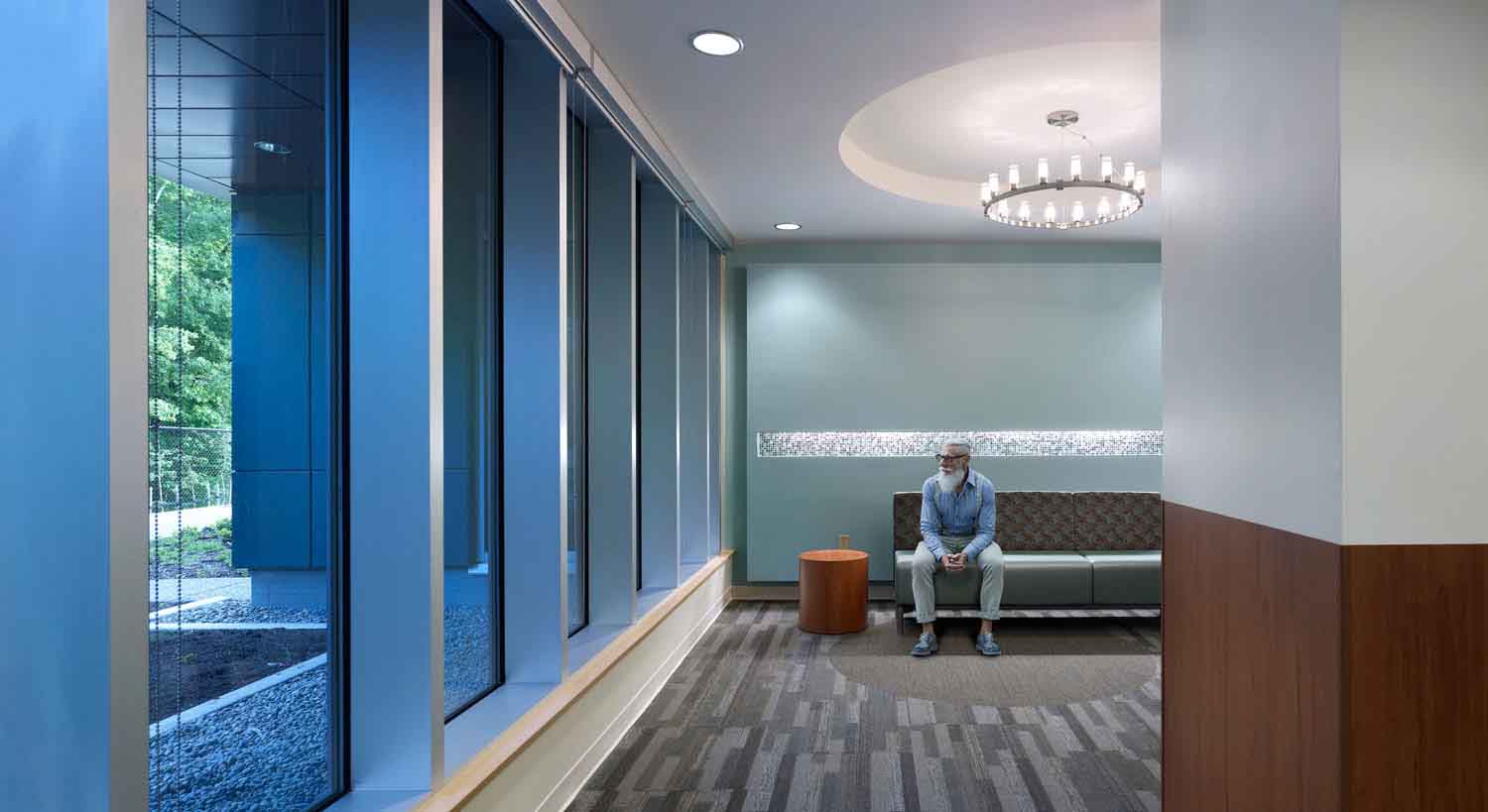

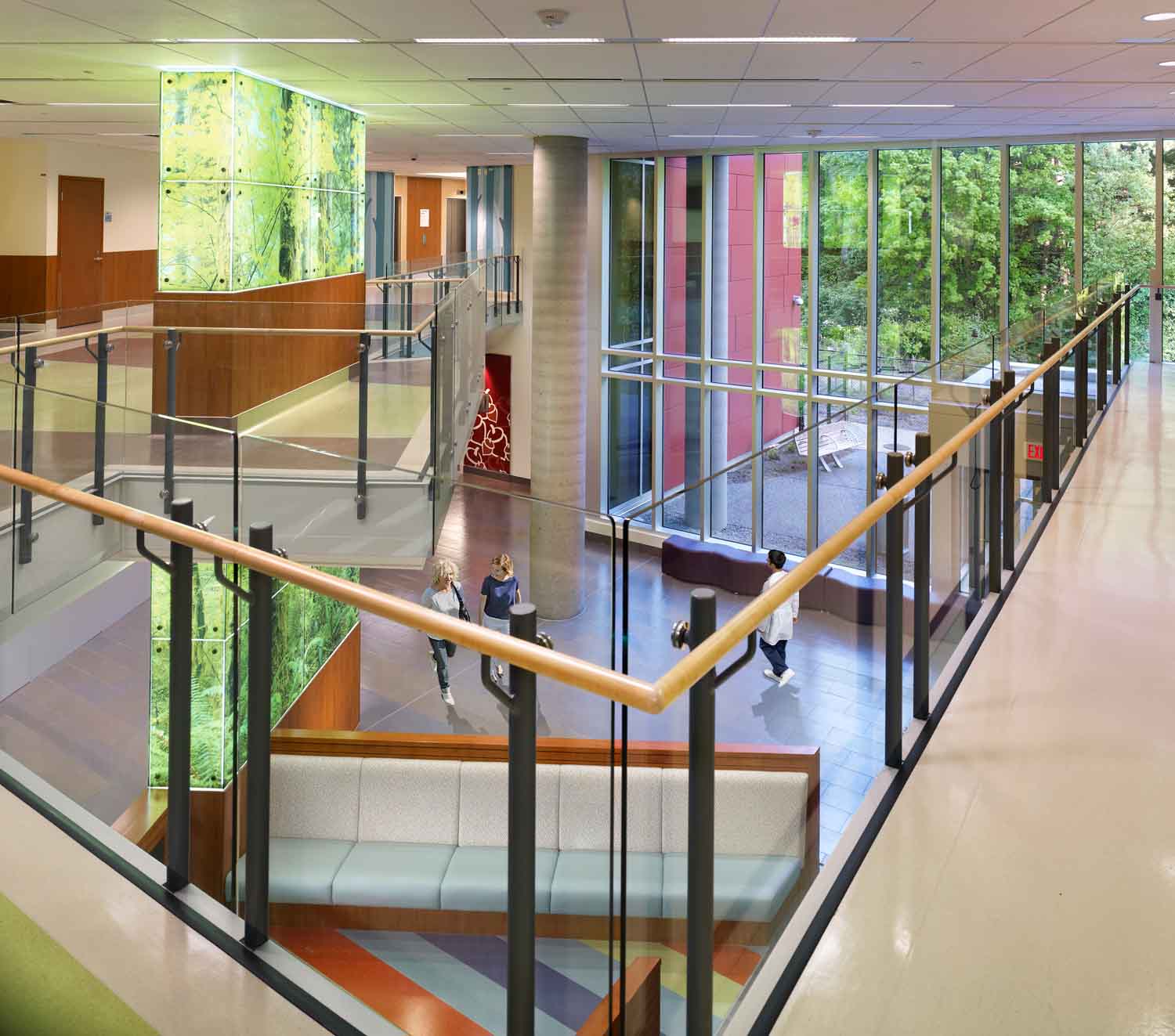

As the tree is a symbol of life, stability, and renewal, we drew inspiration from the Green Timbers Urban Forest, which is immediately adjacent to the site. The lobby echoes the exterior forest with vertical-partition elements that are adorned with life-scale tree photography. Further, guests can enjoy a coffee or snack near two-storey bay windows that overlook the woods, making the lobby a healing, public environment that feels natural and alive. The tranquil space also features a material selection that brings outside nature in: pine beetle wood is used for the lobby’s flooring, which contributed to the project achieving LEED Gold certification.
The check-in area is complete with express check-in kiosks and a staffed desk, and is more akin to a contemporary airport than a healthcare facility. By being immediately visible from every entrance point, the check-in area eliminates potential visitor confusion about where to go first.
The exterior forest can be seen from all patient waiting areas, and the natural light that illuminates these spaces changes throughout the day. The surgical suites also have windows that permit natural light to fill the rooms, which is very rare in an operation setting. At the same time, blinds can be used to black out the light, if necessary.
Each fully modular floor is divided into separate hemispheres for staff and patients, allowing them to meet halfway, where medical care is provided. This planning minimizes patient exposure to the unsettling, clinical elements of healthcare buildings.
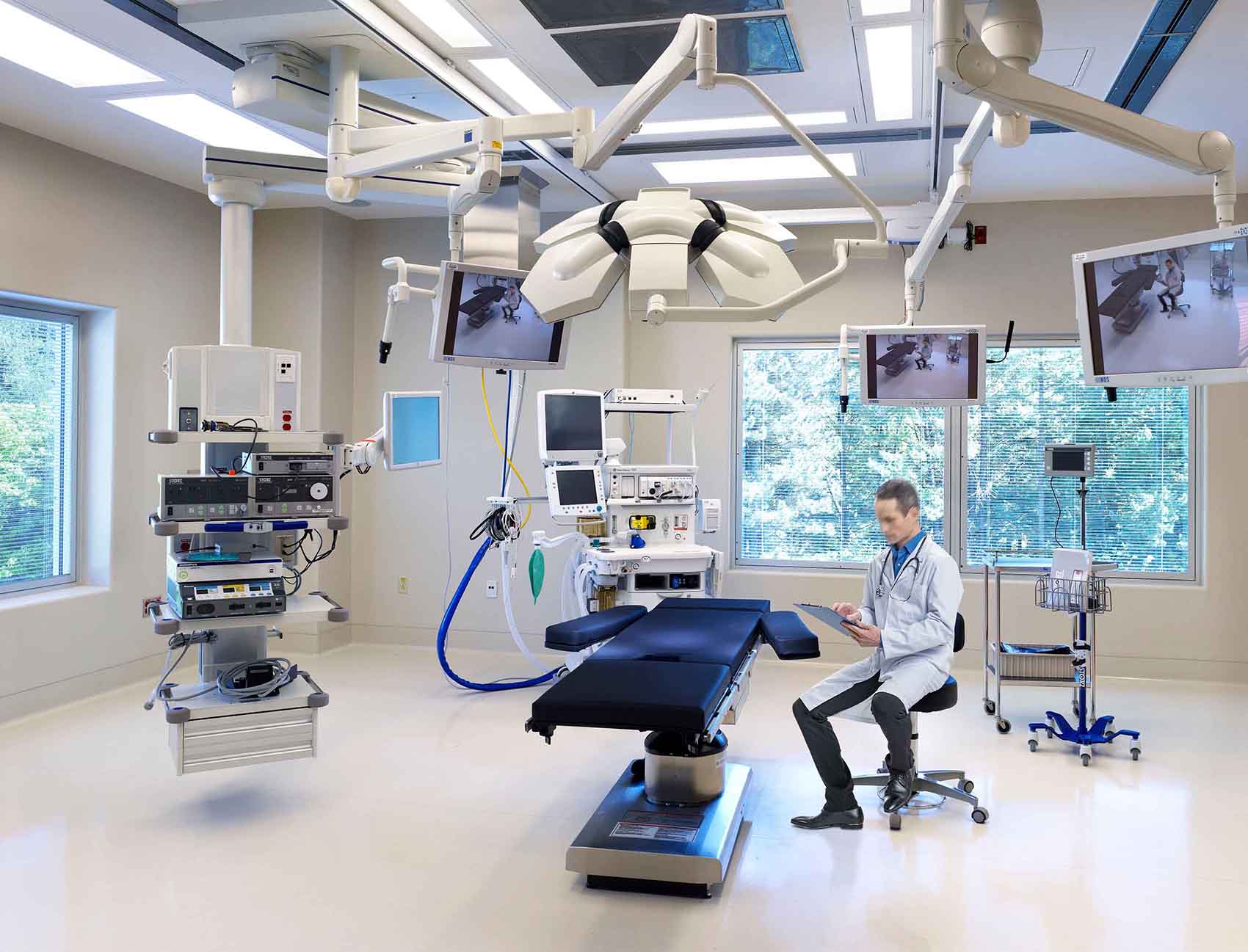

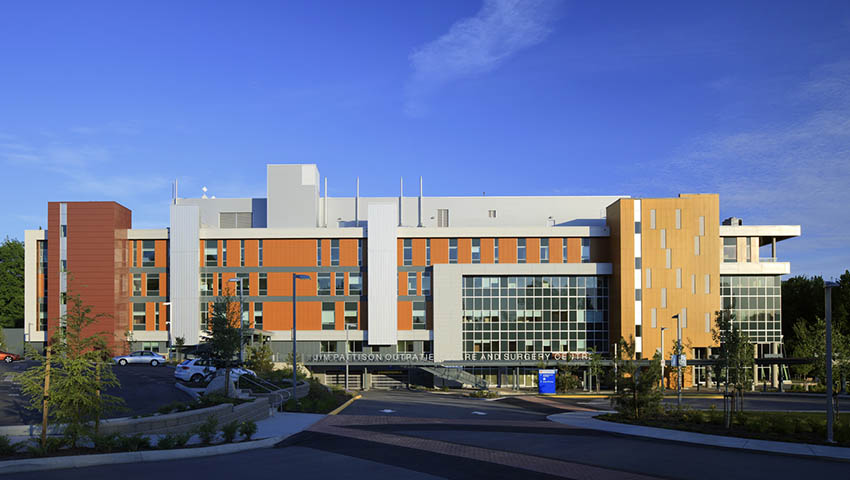

Through a collaborative process, we built what was, at the time, one of Canada’s most efficient outpatient facilities ― and five months ahead of schedule. Patient satisfaction was enhanced even as patient throughput was increased. As the first of its kind in the nation, this revolutionary application of evidence-based design principles to an outpatient facility won the 2011 Commercial Building Award for Excellence from the Fraser Valley Real Estate Board. The project also received a highly commended award at the European Healthcare Design Congress in 2016. The outpatient facility now serves 600,000 patients a year from across British Columbia, and sets a new benchmark for patient and family-centred care in Canada.
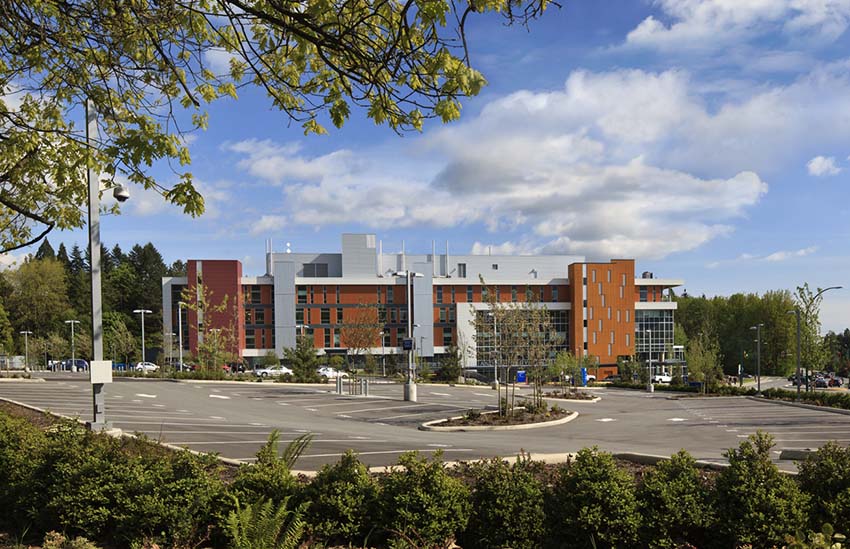

EXPLORE MORE
We’d love to get to know you
Get in touch
Get in touch
Share




